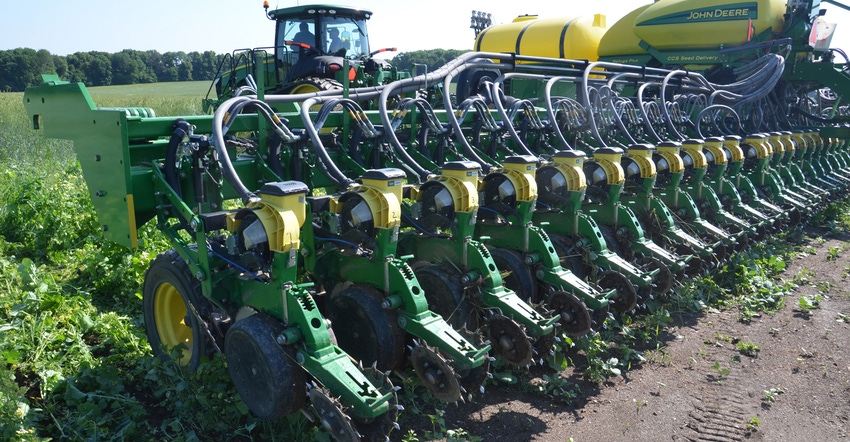
Carter Morgan has heard all the excuses. When your job is encouraging farmers who aren’t using no-till and cover crops to try them, hearing why these practices won’t work goes with the territory.
Morgan is employed by the Vermillion County Soil and Water Conservation District to help persuade farmers to cover up more acres, reducing erosion and nutrient loss into streams and rivers. At the same time, he’s part of a family operation based in Vermillion County, Ind., that has no-tilled continuously and used cover crops on many acres since 2011. Other family members in the operation include his brother Brent, dad Brian and uncle Darrell.
“I share our experiences and try to show the positive side of no-till and cover crops,” Morgan says.
7 arguments
Here is Morgan’s list of top seven reasons why people say no-till and cover crops won’t work, along with his counterarguments:
1. “It won’t work on my soil.” Morgan has seen these practices work on all kinds of soil if the grower is dedicated to making them work. “We have a wide range of land, ranging from soils with gravel underneath to level, black ground,” he adds. “We’ve made it work on all these soils.”
2. “I can’t get cover crops planted.” When the weather doesn’t cooperate, this can be tougher than other times, Morgan acknowledges. “Our goal is for the no-till drill seeding cover crops to stay with the combine,” he explains. “If you take a wide-shot picture of a field we’re harvesting, the combine and drill will often be in the same shot.”
3. “It’s too expensive.” That’s simply a myth, Morgan says. If you talk to people who plant cover crops who can help you zero in on rates, species and varieties to use, you can put together a mix at reasonable prices, he says. Seed for cover crop mixes the Morgans use on their farm typically runs from $12 to $15 per acre.
4. “I don’t have a no-till planter.” What makes your planter a no-till planter?” Morgan asks. He says he’s observed people in conventional tillage hang more stuff on their planter than he does. In fact, his family took row cleaners off in 2019 and found the planter performed better planting green. They intend to leave row cleaners off.
5. “There’s yield drag.” “My family members say they didn’t really see a yield drag when they converted to 100% no-till and began incorporating cover crops,” Carter says. “It hasn’t been an issue for us.”
6. “It’s ugly and lazy farming.” Morgan doesn’t consider his way of farming “ugly.” “And I’m certainly not lazy,” he says. “The truth is that since my family was already doing it when I came back from college in 2013, I don’t know any different. No-till and cover crops seem normal to me.”
7. “It’s too dependent on herbicides.” Morgan contends that in many cases, they use fewer herbicides today than they did before. They’ve found that cover crops help suppress weeds, especially marestail. Cover crops can help hold weeds back early in the season, he adds. In fact, many years, one-fourth to as much as two-thirds of their acres are sprayed only one time.
“We had one instance where we went 370 days between herbicide applications in a field,” he says.
Read more about:
No tillAbout the Author(s)
You May Also Like




